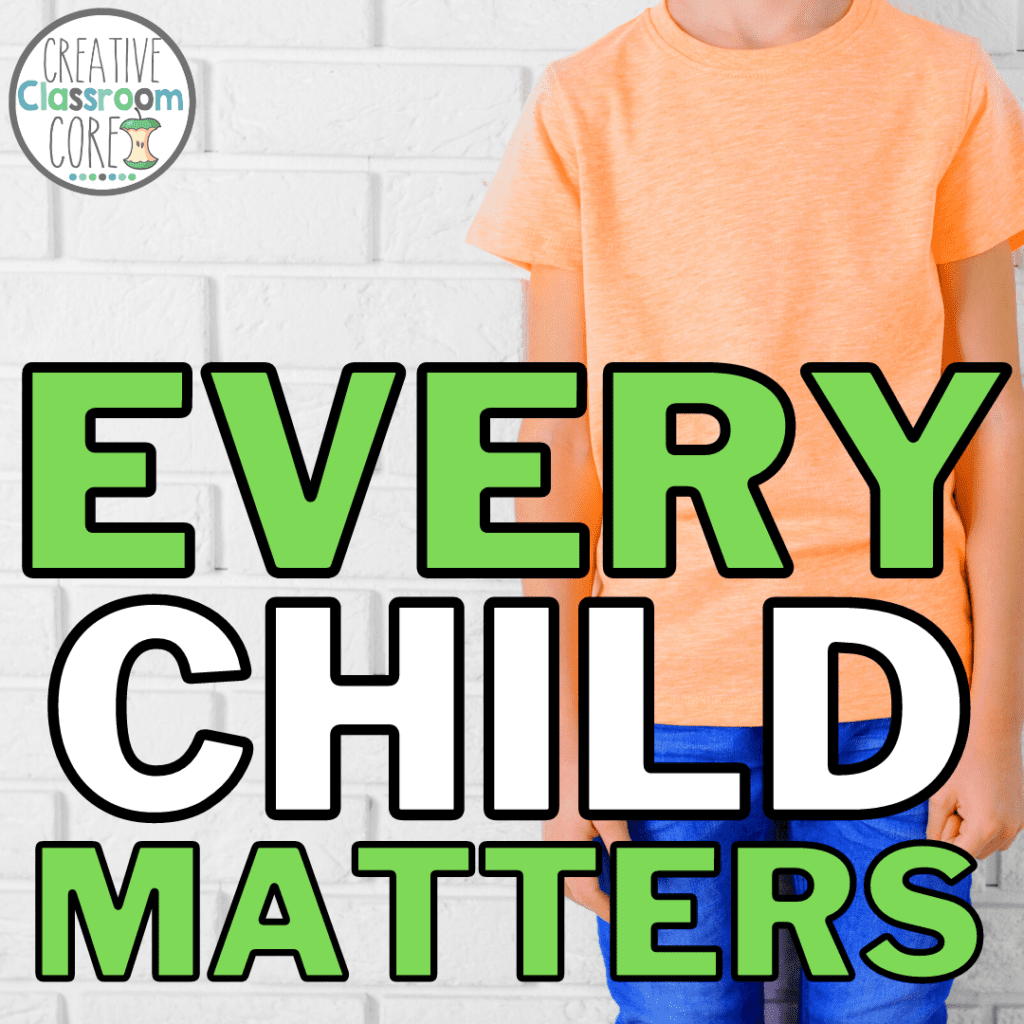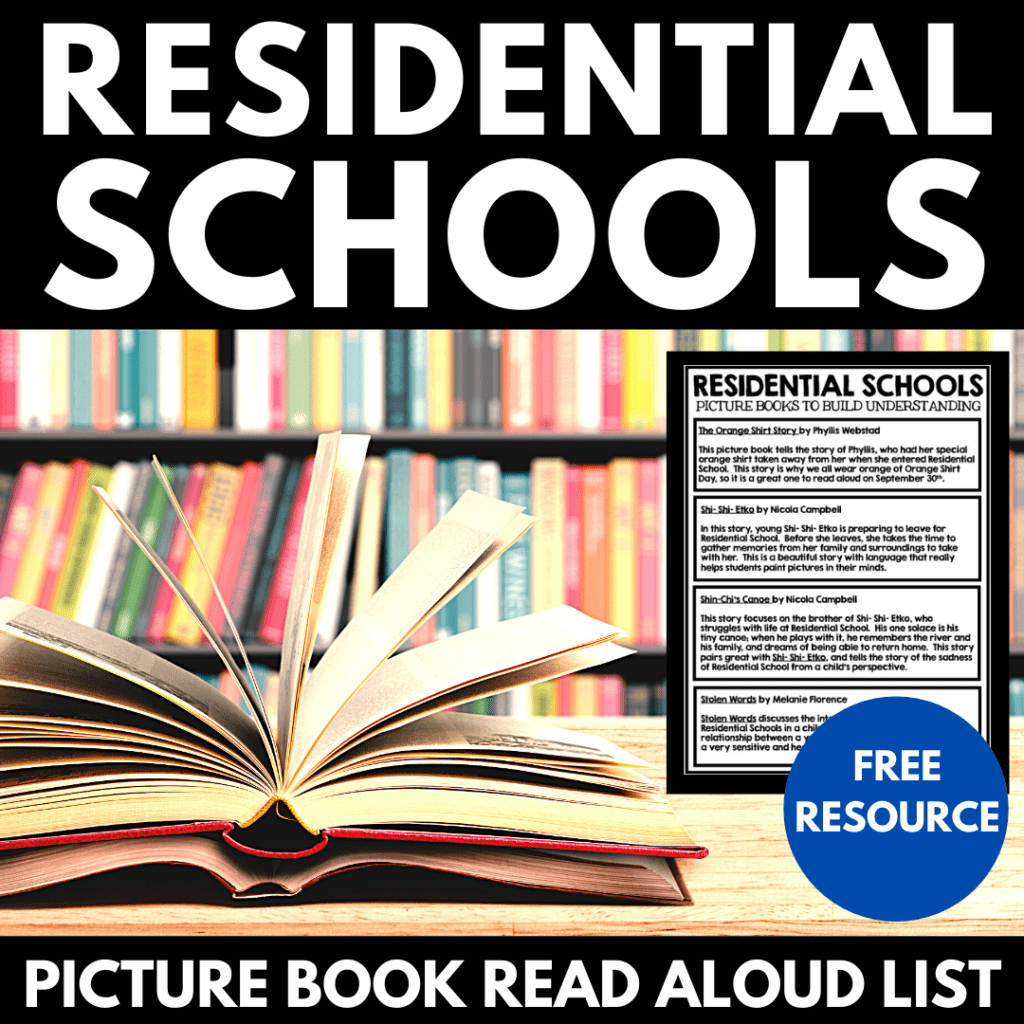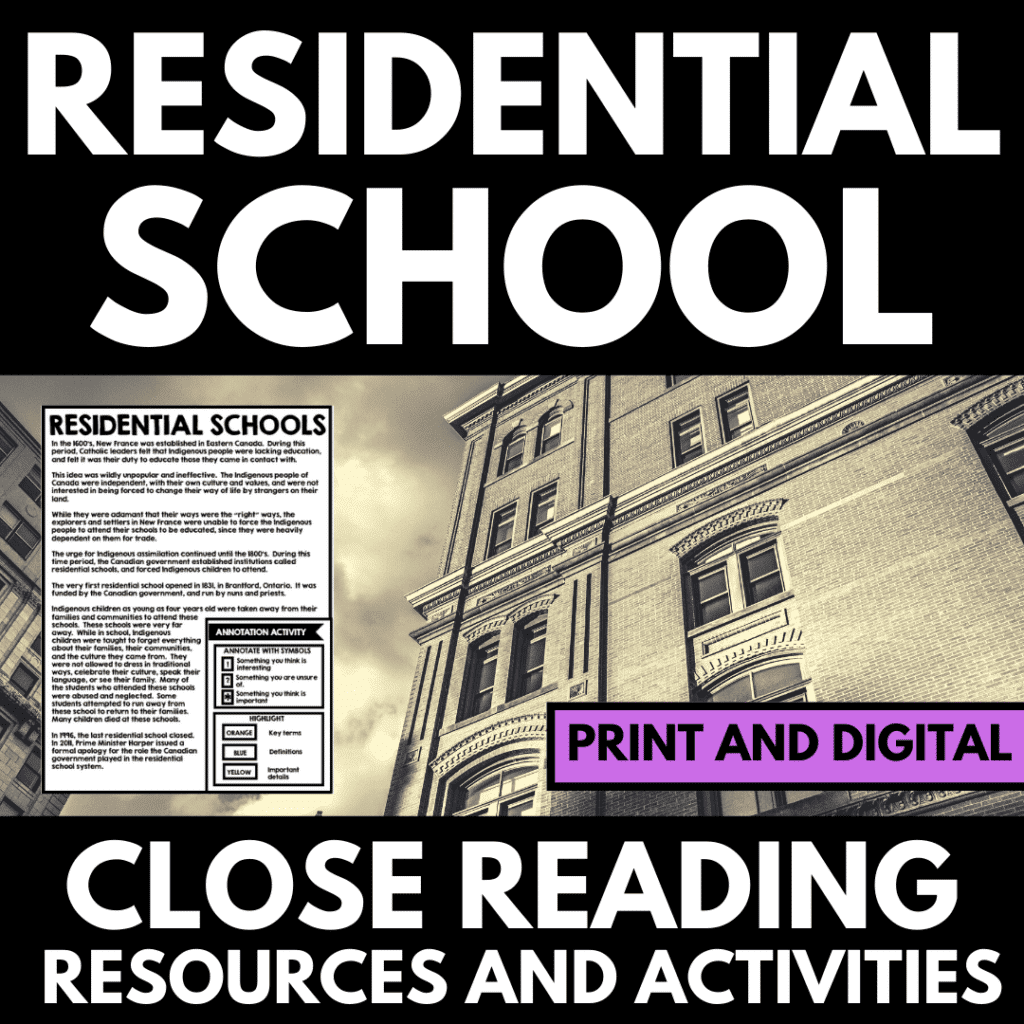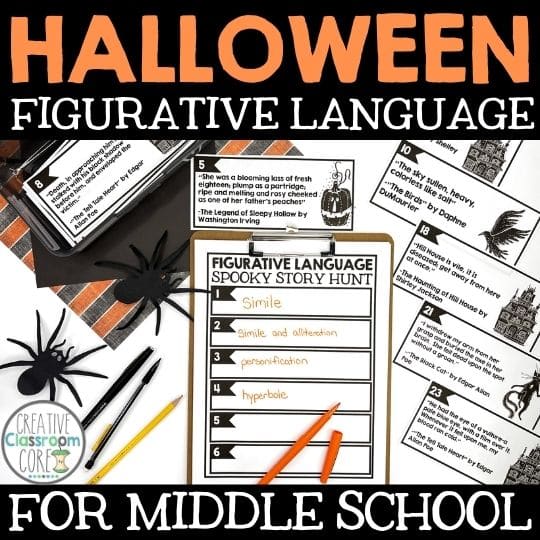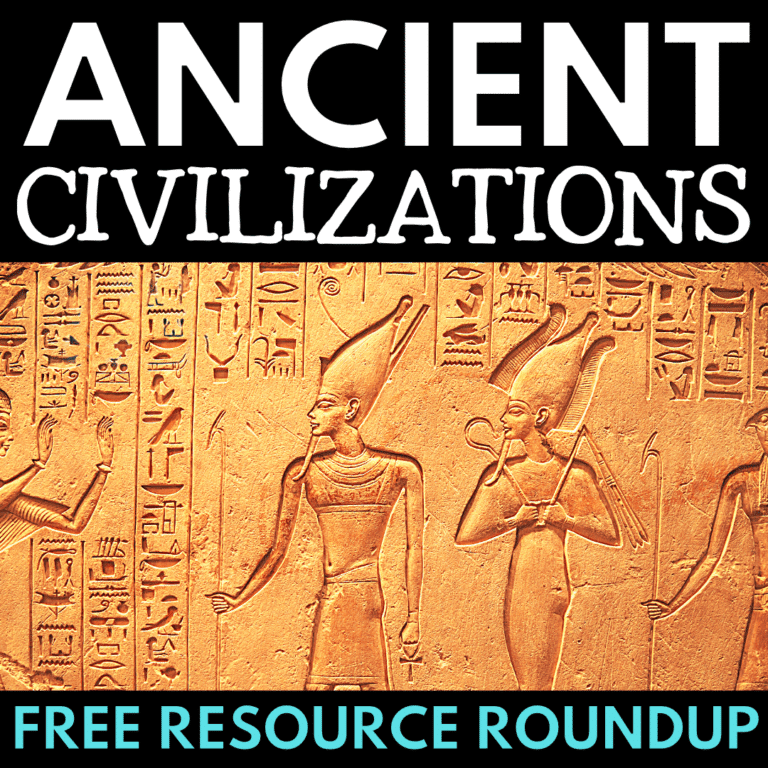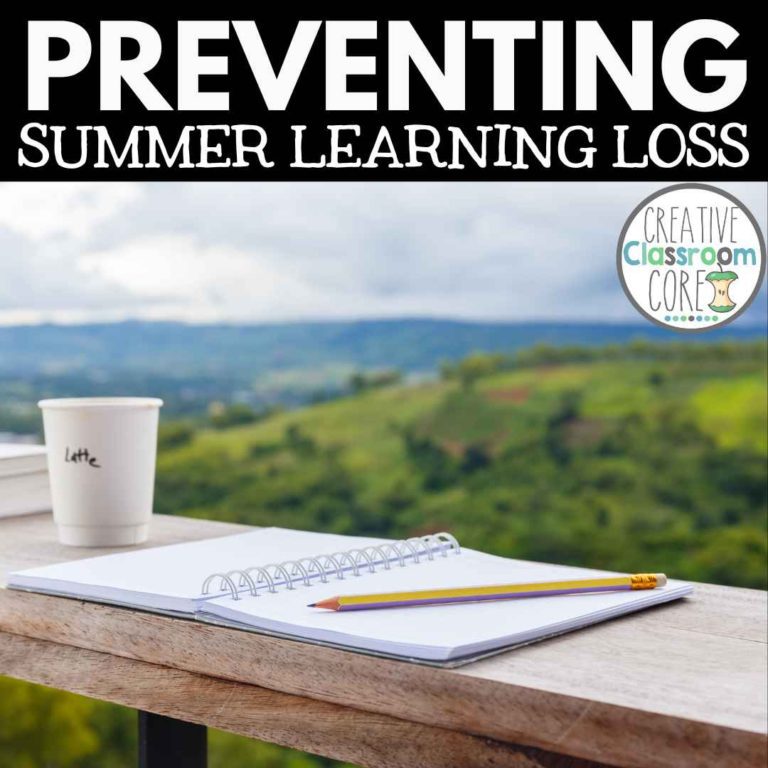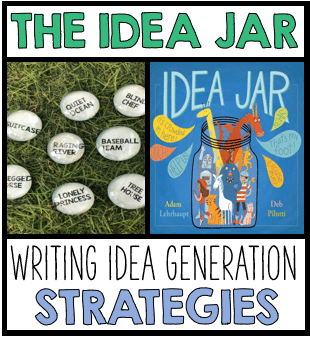Residential School in Canada
By MARISSA DESPINS Updated June 18, 2024
As a BC educator, this is a topic that hits very close to home. There have been ongoing discoveries of so many lost children in our province. Orange Shirt Day is the perfect time to teach about, honor, and bring attention to the sadness that was the Canadian residential school system.
Looking for some resources to help you teach about this important topic? Click on the image or button below!
(This post contain affiliate links which means I make a small commission if you make a purchase, at no additional cost to you. Thank you for your support!)
What was Residential School?
In the 1600’s, New France was established in Eastern Canada. During this period, Catholic leaders felt that Indigenous people were lacking education. They felt it was their duty to educate those they came in contact with.
This idea was wildly unpopular and ineffective. The Indigenous people of Canada were independent. They had their own culture and values. They were not interested in being forced to change their way of life by strangers on their land.
The urge for Indigenous assimilation continued until the 1800’s. During this time, the Canadian government established institutions called residential schools. They forced Indigenous children to attend.
When Did the First Residential School Open?
The very first residential school opened in 1831, in Brantford, Ontario. It was funded by the Canadian government. It was run by nuns and priests.
Who Attended Residential School? What happened there?
Indigenous children as young as four years old were taken away from their families and communities to attend these schools. These schools were very far away. While in school, Indigenous children were taught to forget everything about their families, their communities, and the culture they came from. They were not allowed to dress in traditional ways, celebrate their culture, speak their language, or see their family. Many of the students who attended these schools were abused and neglected. Some students attempted to run away from these school to return to their families. Many children died at these schools.
For additional information, check out this post.
Looking for some free classroom posters to help you teach about residential schools in Canada? Check out our free Posters for Orange Shirt Day!
When Did the Last Residential School Close?
In 1996, the last residential school closed. In 2008, Prime Minister Harper issued a formal apology for the role the Canadian government played in the residential school system.
Teaching About Residential School
The tragedy that was the residential school system, and the ongoing effects it has had on the Indigenous people of Canada is incredibly important to teach our students about. Only through education can we ensure something like this never happens again. It is a subject that is very heavy and contains sensitive content. Because of this, it is important to teach about it in a way that is age appropriate.
There are a lot of fantastic picture books that approach the subject in ways that are both honest and gentle. This makes them great introductions for our younger learners. Some of my favorites include:
The Orange Shirt Story by Phyllis Webstad
Shi-Shi-Etko by Nicola Campbell
Shin-Chi’s Canoe by Nicola Campbell
When I was Eight by Christy Jordan-Fenton
Not my Girl by Christy Jordan-Fenton
I am not a Number by Jenny Kay Dupuis
When we were Alone by David A Robertson
Stolen Words by Melanie Florence
For a FREE book list with short descriptions of each of these stories, click here or on the image below.
All of these books make great read alouds for Orange Shirt Day, or any time of year.
Close Reading Activities To Teach About Residential Schools in Canada
Close reading is a super effective strategy to help students understand complex text. Repeated readings and annotation deepens student understanding and allows students to make real life connections to what they are reading. Close reading asks students to slow down and focus deeply on a text.
Many students come into my classroom with very little knowledge about residential schools. Even though the last school closed relatively recently, a lot of information about them was kept quiet in Canada for a very long time. Because of this,, we start by completing a close reading activity focused on a reading passage all about residential schools. This provides a base of knowledge for all students, and provides a jumping off point for future discussions and activities.
After reading though the passage, students annotate the text, answer comprehension questions, and share their learning with a partner.
For tips and tricks about close reading, and ways to get the most out of this reading strategy in your classroom, click here to check out a previous blog post.
You can check out these and other resources about the Canadian Residential School system by clicking here or on the image below.
I hope these activities will help you bring this sensitive subject to life in your classroom.
Looking for some additional resources to help you teach about this sensitive subject with your learners?
Click on the image below to grab a copy of this complete Orange Shirt Day student booklet. It contains short reading passages, comprehension questions, and a fun t-shirt design activity!
Click the image below to see this resource in my TPT shop.
Looking for more Information of Canadian history and activities for orange shirt day?
Check out my previous post here:
Canadian Heroes to Inspire Your Learners
Favorite Indigenous Read Alouds
All About Orange Shirt Day 2024
Using Orange Shirt Day Quotes in the Classroom
Looking for a free resource to help you teach about Orange Shirt Day?
Click on the image below to sign up for my email list and download this FREE set of Orange Shirt Day 2024 bookmarks and coloring pages. By signing up for my email list you will also gain access to periodic emails with free resources, teaching tips, and exclusive deals.
Interested in signing up for my email list?
If you are interested in signing up for my email list, you can do so by clicking on the link below. I periodically send out emails with free resources, teaching tips, and exclusive deals. Signing up will also give you immediate access to some of my best selling Interactive Notebook resources – foldable activities, graphic organizers, and other fun activities.

